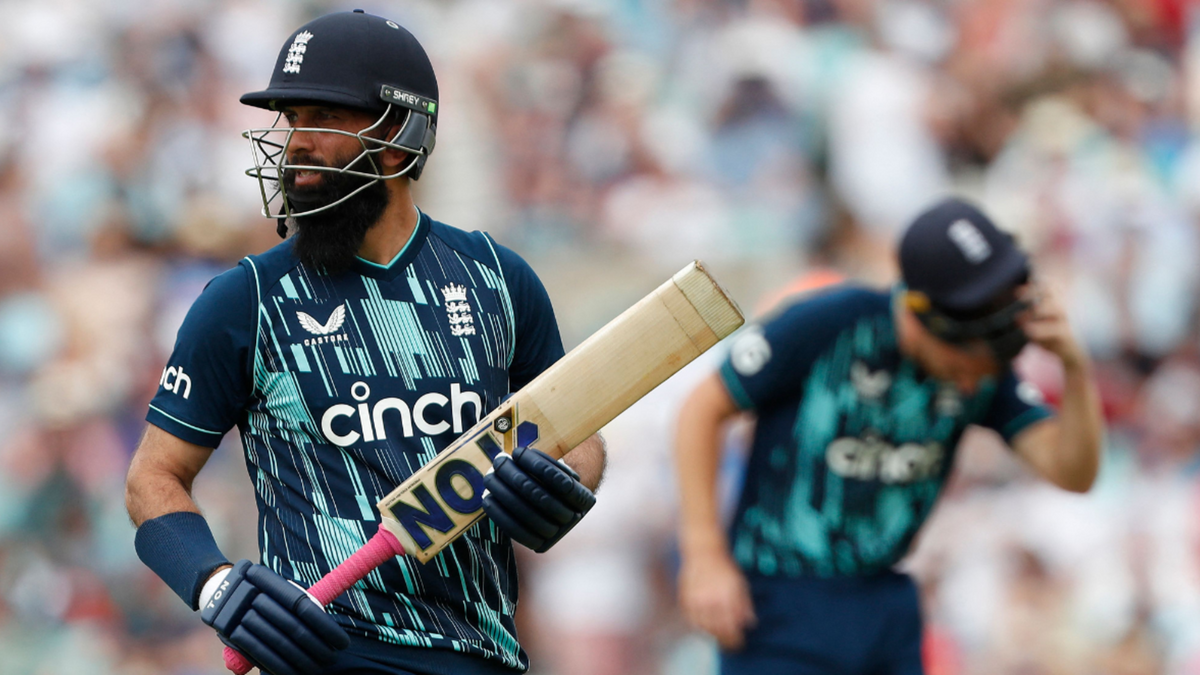
Few players, when they’re in full flow, conjure up the warmth of feeling Moeen Ali does among England fans.
It’s also true to say that few careers have divided opinion as much as his. Watching him effortlessly loft a drive over the boundary or celebrate a crucial wicket make up some of the most iconic sights across all formats of England’s last decade. However, in ODI cricket at least, the gaps between those performances have become wider, leaving Matthew Mott and Jos Buttler with another problem to add to their lengthy list in the build-up to their World Cup title defence in October.
Against South Africa yesterday, Moeen’s wicket precipitated the collapse which would eventually see England lose by 27 runs. For a side which has consistently been spoken of as batting all the way down to No.10 & 11, losing five wickets for 49 runs from the commanding position they were in when Jason Roy struck his 11th ODI century should be a wake-up call.
Given the aura and reputation that surrounds him, it seems incredulous that the last time he passed fifty with the bat in ODI colours was the night Ben Stokes was arrested in Bristol. Or, to put it another way, one and a half World Cup cycles ago. Since then, Moeen’s role and place in England’s starting XI has fluctuated, as with the rest of his career he has generally been a one-size-fits-all plug for whatever hole England currently need to fill, but he has become a steady fixture in Buttler’s side as vice-captain.
In the build-up to the 2019 World Cup, his form with the bat had already started to wane. He averaged 19.75 between scoring his century in Bristol and England’s World Cup opener against South Africa. But with the ball, he continued to be a reliable source of wickets. He took 31 wickets from 35 matches with a strike rate of 51.00 in that time period, making him one-half of the spin duo who were a vital part of England’s pre-2019 machine. In only five of those 35 matches did he bowl fewer than seven overs.
But since the final match he played in the competition nearly four years ago, Moeen has played 23 matches and taken 12 wickets, his strike rate has increased to 63.6, and on seven occasions he has bowled fewer than seven overs in an innings. His bowling is less penetrative than it once was.
Moeen is potentially still able to fulfil the role of a stable middle-overs holding spinner despite a definite drop in his effectiveness. His economy rate in the last three years (5.34) is good and lower than all other spinners who have represented England in ODIs in that timeframe. But he no longer has a significant advantage over those coming up behind him in that regard.
In Liam Livingstone’s short ODI career, he has taken his wickets with an average of less than half of what Moeen’s career bowling average is, at a better strike rate and similar economy. Will Jacks is also coming up behind him. Although yet to make his ODI debut, he has made waves in T20 franchise tournaments, most recently in the SA20, and has also tried to model himself on Moeen’s part-timer turned all-rounder story under Gareth Batty’s tutelage at Surrey.
[breakout id=”0″][/breakout]
Choosing to go into the 2023 World Cup without Moeen, however, will not be as unproblematic as it was halfway through the tournament in England. Without Ben Stokes to balance the side as the premier all-rounder, Ali has filled the role of the ballast in the middle order. Batting mostly at six or higher, he allows room for an extra-bowler and, in theory, doesn’t compromise their depth with the bat. But, since 2019 Moeen has averaged 21.14 with the bat and struck at 76.48. On the 16 occasions he has batted in ODIs for England since then, he has failed to reach double figures in almost a third of those.
One solution England could look to is having Livingstone, or even Jacks, fill in at No.6 with Moeen at No.7. While this would allow less pressure on Moeen with the bat, they would have to compromise by playing three seamers – perhaps not that much of a problem in a World Cup in Indian conditions. To play four seamers, one of England’s bowling all-rounders would have to step up to bat six, most likely Curran, who averages less than Moeen with the bat in ODIs with a lower strike-rate.
As with several of England’s ODI headaches ahead of their nine-month lead-in to the World Cup, Stokes’s un-retirement makes the equation a lot simpler. If he came back in the role that Moeen has shown is impossible for most to fill, England could play five bowlers without question of whether any of them are good enough to be considered serious batters. That would probably mean two of Jacks, Livingstone and Moeen would miss out on selection.
Make no mistake, Moeen is an irreplaceably important part of the white-ball force England have become, but if their dominance is to continue he either has to reignite the fire of the player England fans grew to love or make way for the one coming up behind.








